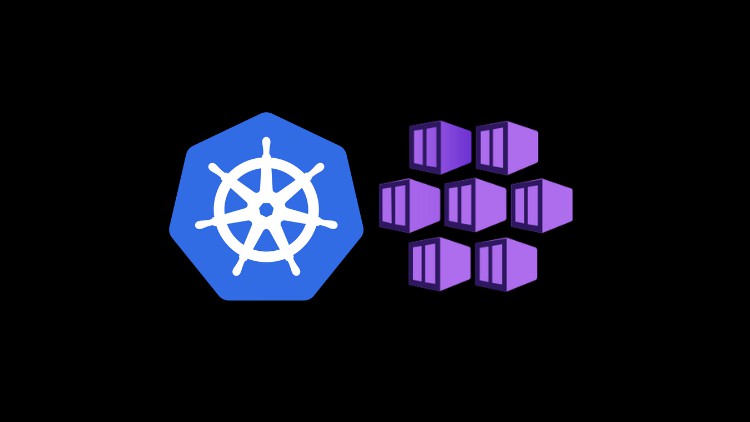Azure Kubernetes Service with Azure DevOps and Terraform
Docker, AKS, Azure Disks, DevOps, Virtual Nodes, ACR, DNS Zones, Active Directory, Kubernetes RBAC, Ingress, Terraform
4.66 (5498 reviews)

43,707
students
28 hours
content
Mar 2025
last update
$119.99
regular price
What you will learn
You will learn to build Azure AKS Production grade clusters using Azure AKS CLI
You will learn terraform from basics and create terraform manifests for provisioning Azure AKS Production grade clusters
You will learn to provision Azure AKS Clusters using Terraform and Azure DevOps.
You will learn 30+ kubernetes concepts and use 21 Azure Services in combination with Azure AKS
You will implement DevOps concepts with Azure DevOps Continuous Integration Pipelines and Continuous Deliver Pipelines also called Release Pipelines
You will write Azure DevOps CI Pipelines from scratch using Starter Pipelines
You will write kubernetes manifests with confidence after going through live template writing sections
You will learn Kubernetes Fundamentals in both imperative and declarative approaches
You will learn writing & deploying k8s manifests for storage concepts like storage class, persistent volume claim pvc, mysql
You will learn to switch from native Azure Disks to Azure MySQL Database using k8s external name service
You will learn writing and deploying load balancer k8s manifests for Azure Standard Load Balancer
You will learn writing ingress k8s manifests by enabling features like context path based routing, domain name based routing, SSL with LetsEncrypt and External DNS.
You will learn writing k8s manifests for Azure Virtual Nodes (serverless) and do mixed mode workload deployments in both Azure Linux NodePools and Virtual Nodes.
You will learn using ACR - Azure Container Registry in combination with AKS in 3 ways (ACR Attach, using Service Principal, on Virtual Nodes)
You will learn to enable Autoscaling features like HPA & Cluster Autoscaler
You will learn Docker fundamentals by implementing usecases like download image from Docker Hub and run on local desktop and build an image locally, test and push to Docker Hub.
You will master many kubectl commands over the process
You will learn to integrate Azure AKS with Azure Active Directory for AKS Admins to be created managed in Azure Active Directory
You will learn Kubernetes RBAC concepts like role, role-binding, cluster role, cluster role binding in combination with Azure AD for Azure AKS granular level access control
Related Topics
3381074
udemy ID
7/31/2020
course created date
12/9/2020
course indexed date
Bot
course submited by